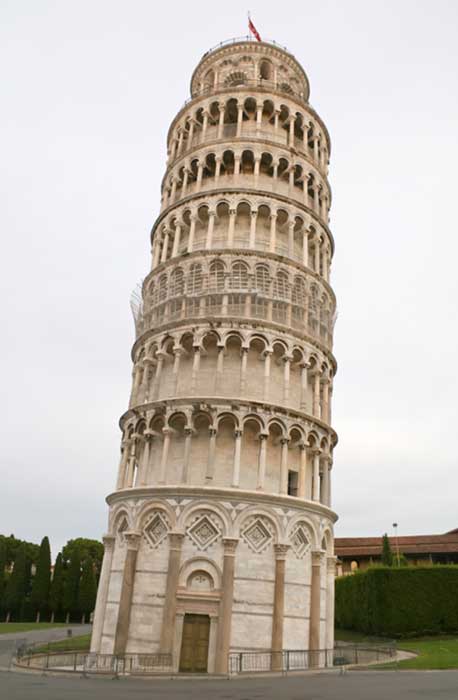Extreme Example of Foundation Failure

The Lasting Impact of a Weak Foundation
Building anything, from a small house to a towering skyscraper, hinges on one critical aspect: the foundation. Yet, history is dotted with dramatic failures that highlight the importance of getting the foundation right. From the sunken dreams of a luxury condo in Texas to the ancient, still-leaning Tower of Pisa, these stories are not only fascinating but also teach crucial lessons in construction and engineering.
What Happens When a Foundation Fails
When foundations fail, the consequences can range from visible cracks and tilting to the complete collapse of the structure. Foundation failure jeopardizes the safety of a building and its occupants, leading to costly repairs, loss of property, and in severe cases, loss of life. Understanding the signs of failing foundations and the conditions that lead to such failures is crucial for maintaining structural integrity and safety.
Leaning Tower of Pisa: The Iconic Tilt
Perhaps the most famous example of a foundation failure is the Leaning Tower of Pisa. Construction began in 1173 on a foundation laid in soft soil composed of clay, sand, and shells. The tower began to lean almost immediately, a problem that was only worsened as construction continued. Although modern engineering techniques have stabilized it somewhat, the Leaning Tower of Pisa remains a testament to the enduring challenges of building on unstable ground.
Quebec Bridge: Underestimating the Load
The collapse of the Quebec Bridge in 1907 is a reminder of what can go wrong when load capacities are miscalculated. Four years into its construction, the bridge collapsed due to an inadequate understanding of the load the foundation could bear due to incorrect calculations during the design phase. This failure led to a complete overhaul of bridge engineering standards globally, emphasizing the need for precise calculations and rigorous testing of foundation strength before construction.
Transcona Grain Elevator: A Sinking Debut
The Transcona Grain Elevator in Canada is another tale of foundation woe. Designed to store vast amounts of grain for the Canadian Pacific Railway, this facility faced trouble from the start. On its very first operational day in 1913, the structure began to sink into the clay below, shifting dramatically due to the weight of the grain and the unstable silt salt within the clay layers. Within 24 hours, it had tilted a staggering 27 degrees. This incident highlights the necessity of understanding soil composition and ensuring that foundations are capable of handling both the structure’s weight and any additional load.
Ocean Tower: A Dream Crumbled
In Texas, the vision for the 31-story Ocean Tower promised luxury living with stunning views on South Padre Island. Yet, this dream quickly turned into a nightmare. Shortly after construction began, the building started to sink and lean due to the unstable soil underneath, a mix of sand and expansive clays that couldn’t bear the structure’s weight. By 2009, the incomplete tower had to be demolished. This failure serves as a harsh lesson about the importance of thorough soil testing and robust foundation planning in construction.
Surfside Condo Collapse: A Recent Tragedy
The tragic collapse of the Champlain Towers South in Surfside, Florida, in 2021 is a recent and heart-wrenching reminder of what can happen when structural and foundational issues are not addressed. The building, which had been flagged for structural deficiencies years before the collapse, suffered from problems that included degraded concrete and insufficient rebar coverage, which contributed to the failure. This disaster, which resulted in the loss of 98 lives, shows the critical need for continuous monitoring, maintenance, and repair of building foundations, especially in corrosive environments like coastal areas.
Implications for Modern Engineering
These stories of foundation failures serve as more than just cautionary tales. They are crucial learning points for the construction and engineering fields, illustrating the severe consequences of neglecting foundational integrity. Today’s engineers and architects take these lessons to heart, using them to inform safer, more reliable construction methods. Modern engineering now incorporates sophisticated techniques like geotechnical surveys, computer simulations, and advanced materials to ensure that new structures can withstand the demands placed upon them. These past failures remind us of the importance of regulations and standards in the building industry, ensuring that such disasters do not recur.
Trust Structured Foundation Repairs
At Structured Foundation Repairs, we pride ourselves on integrity and quality, values ingrained since our founding in 2003 by Texas A&M alum Tom Kidd. Our team has grown from three initial members to a leading foundation repair provider in the Dallas/Fort Worth and Houston areas, recognized with awards like the “Aggie 100” and Angie’s List Super Service Award. In 2023, we deepened our commitment by transitioning to an Employee Stock Ownership Plan (ESOP), making every team member a company owner. If you’re facing foundation issues, choose Structured Foundation Repairs, where every home is treated with utmost care. Contact our team to secure the foundation of your home.
